Wood Types
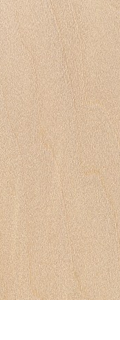
Basswood (Tilia americana)
Pale white to cream color, with only subtle growth rings. The color is mostly uniform throughout the surface of the wood. Basswood is both very light and very soft: perhaps among the softest of wood species that is still considered a hardwood, with the exception of Balsa. But although it’s very light, it has an outstanding weight-to-stiffness ratio: though it’s overall strength is on par with its low weight. Simply put, when put under stress, it won’t bend much, but it will still break. Species in the Tilia genus are usually referred to as either Lime or Linden in Europe, while in the United States it’s most commonly called Basswood.
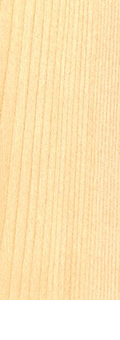
Yellow Cedar (Cupressus nootkatensis)
Alaskan Yellow Cedar has a light yellow appearance. Sapwood is a similar whitish/pale yellow and isn’t distinct from the heartwood. Color tends to darken with age upon exposure to light, (though when left exposed outdoors it weathers to a uniform gray). The grain is usually straight, though sometimes wavy, with a uniform medium to fine texture. Coomon uses of Alaskan yellow cedar are as follows; carvings, boatbuilding, siding, flooring, decking, outdoor furniture, musical instruments (flutes, soundboards on guitars), boxes and chests, and various utility/construction applications.
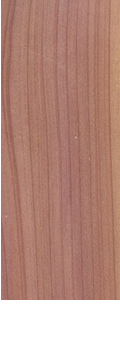
Red Cedar (Juniperus virginiana)
Red Cedar tends to be a reddish or violet-brown. Sapwood is a pale yellow color, and can be appear throughout the heartwood as streaks and stripes. Has a straight grain, usually with knots present. Has a very fine even texture. Red Cedar has a distinct and tell-tale scent: the wood is commonly used in closets and chests to repel moths and other insects. Other common used of Red cedar include; fence posts, closet and chest linings, carvings, outdoor furniture, pencils, bows, and small wooden specialty items.
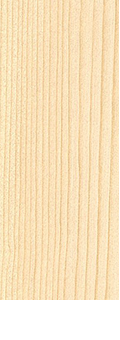
Black Spruce (Picea mariana)
Black Spruce is typically a creamy white, with a hint of yellow. Black Spruce compares very similarly with Sitka Spruce in terms of mechanical properties, and is on average slightly heavier and stronger than Sitka Spruce. However, Black Spruce is a much smaller and narrower tree, and is not available in the same widths as Sitka Spruce.
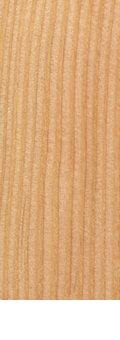
Douglas Fir (Pseudotsuga menziesii)
Can vary in color based upon age and location of tree. Usually a light brown color with a hint of red and/or yellow, with darker growth rings. In quartersawn pieces, the grain is typically straight and plain. In flatsawn pieces, (typically seen in rotary-sliced veneers), the wood can exhibit wild grain patterns. The grain of Douglas Fir is generally straight, though wavy or curly grain is occasionally seen. Medium to coarse texture, with a decent natural luster. The tree itself grows to be very large, and yields a large amount of usable lumber and veneer for plywood. It is an incredibly valuable commercial timber, widely used in construction and building purposes. The wood is very stiff and strong for its weight, and is also among the hardest and heaviest softwoods.
Paper Types
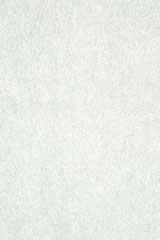
Basic Shoji Paper
The most basic and readily available Shoji paper offering.
In terms of translucency, the basic Shoji paper will diffuse 50% of light that passes through it. Basic Shoji paper is available in many patterns. Please inquire on what patterns are available.
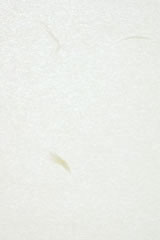
Warlon Shoji Paper
Warlon aka Laminated Shoji Paper is more durable and less likely to tear when compared to basic Shoji paper.This also makes it impervious to moisture and the elements. Warlon paper is completely stain-free and surface washable. Traditional Shoji paper is basically encased inside a layer plastic film. Definitely recommended material for households with children and/or pets, or even in commercial space applications.
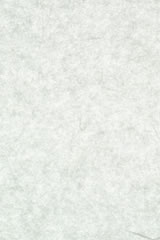
Kozo Shoji Paper
Made of 100% Kozo known in the western culture as Japanese mulberry. This is the most traditional and extravagant of the Shoji papers. Kozo paper is all hand made using traditional methods of mixing fibers and natural ingredients in a wooden tub and straining using a large rectangular sieve. Since there is no pulp used in Kozo paper, it does not oxidize and change in color over time as with western paper.
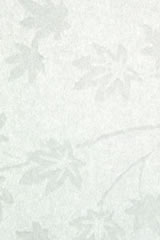
Textured/Pattern Shoji Paper
As the name implies, textured pattern Shoji paper incorporates adding fibers and other natural materials in order to provide a sense of depth, volume and more natural appeal. Textured Pattern Shoji can be found in Basic, Warlon, and obviously Kozo paper.
Selection of Kumiko Style

Yokoshige Shoji (Horizontal Style)
A Shoji where the majority of the sections in the Shoji are horizontal rectangles. This horizontal style is seen more in the Kanto (Eastern) region of Japan.

Tateshige Shoji (Vertical Style)
A Shoji where the majority of the sections in the Shoji are vertical rectangles. This vertical style is seen more in the Kansai (Western) region of Japan.

Aragumi Shoji (Brisk Assembly Shoji)
A Shoji frame pattern where larger more square-shaped sections are used. This is the standard pattern what people mostly associate when it comes to Shoji screens/panels.

Yukimi Shoji (Snow Viewing Type)
This Yukimi Shoji was developed so that one can view the snow landscape from the comfort of inside the room through a glass piece installed directly inside the Shoji.

Koshizuke Shoji (Waistboard Shoji)
As a means of protecting the Shoji, a kickboard/kickplate type of Shoji was developed so that constant repair would not be needed. Recommended Shoji for high traffic areas.

Yukimi (Suriage) Shoji
A Shoji that is generally divided into 2 sections where the bottom section can open or close vertically.

Katabiki Nekoma Shoji
A Shoji installed within a Shoji. The inner Shoji can be opened one way, either vertically or horizontally

Hikiwake Nekoma Shoji
A pair of smaller Shojis installed in a Shoji、the smaller Shojis open away from each other.

Jika Glass Shoji
A Shoji where a larger panel of glass is inserted into the Shoji frame.

Yokogaku Shoji (Horizontal Frame Shoji)
A Shoji where a horizontal frame is incorporated in the jointery.

Katagaku Shoji
When a framed window is jointed within a Shoji panel.

Kake Shoji (Hanging Shoji)
Mostly used in traditional tea rooms. It is hung using hardware.

Taiko Shoji
A frame is installed around inner perimeter of the Shoji opening and the and the Shoji Paper is adhered to both sides of the Shoji.

Sumimaru Shoji (Rounded Corner Shoji)
Shoji design where inner frame has rounded corners.

Kawari Shoji (Custom Shoji)
Custom made Shoji. Let us build what you have in mind.
Tracking
Wood Tracking
This is the most traditional way to install a Shoji. Wooden slotted tracks are installed above and below the Shoji. Wooden tracks are recommended if you are after the authentic look and feel when opening and closing the Shoji.
Metal Roller Tracking
Metal Roller Tracking uses aluminum “V”rails and casters for the bottom track and also a hanging system to alleviate the weight of the door. This system allows for constant smooth operation of your Shoji as wood tracking has a tendency to wear due to friction as well as warp over time due to humidity and climate change.
Other
Please inquire if you have a request for mounting of your Shoji besides a track/rail system. Shoji can be modified to fit most openings and incorporated to door jambs using western hinges and other hardware. Shoji can also be made into bifold doors, pocket doors or even free standing.
